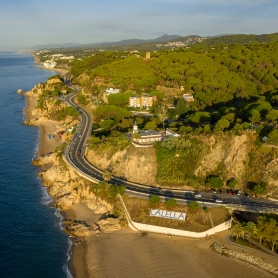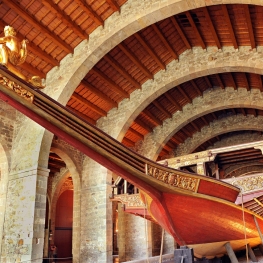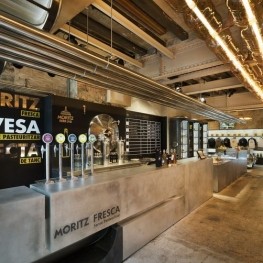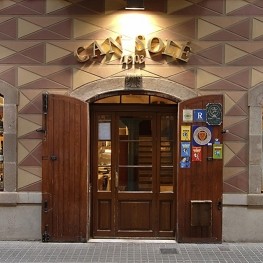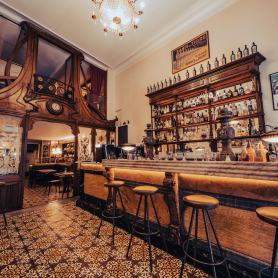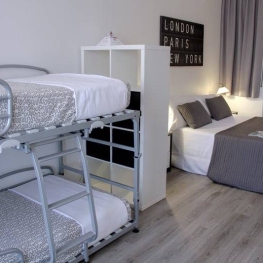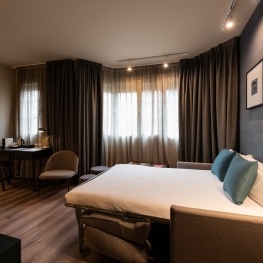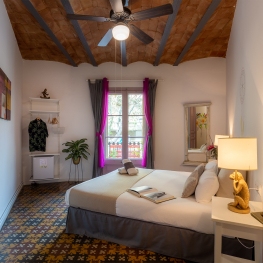Maritime route around Montgat
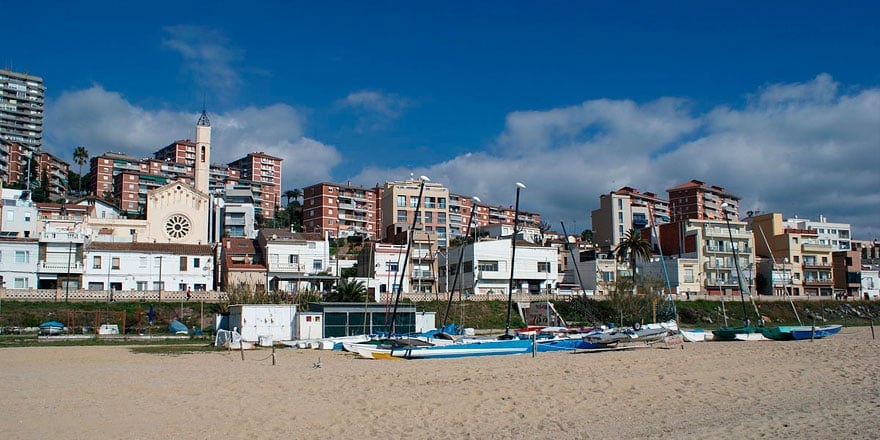
Montgat is the southernmost town in the Maresme region, between Badalona and El Masnou, 10 km away from the city center of Barcelona.
It is a villa proud of its membership of the region, its idiosyncrasy, its mild climate and its exceptional location. Montgat preserves the essence of the town spirit, with reminiscences of maritime and industrial town that let you glimpse when you lose by its streets. It is therefore essential to be able to walk unhurriedly through the wide spaces that are found throughout its 2.95 km2, especially for its beaches and parks.
Here are some of these spaces.
Promenade and beaches
The promenade of Montgat joins the coast of Badalona and reaches the Vilassar de Mar. It is a journey of almost 15 kilometers ideal for walking, to practice sports and to contemplate the beaches of the municipality.
Cala Taps beach
The closest link was established with the bleach factory "Conejo", which crowned the place and was one of the great economic sources of the municipality. There was also that of Can Barrau.
Due to the proximity of the Conejo factory, it was a place where there were a lot of plugs, both in sand and water. For this reason, historically, everyone came to know this beach as "Cala Taps".
Beach of the rocks
It is a reference beach for surfers because of the typology of its waves and its openness to the sea. The beach receives this name by the rocks of the hill, leftovers of the work of drilling of the tunnel of the train, in order to create the reef.
Playa de las Barcas
Traditionally, the entry of boats has always been done on this beach, directly in front of the fishing district, which gives rise to the so-called "Montgat del pescado". It is just opposite where the area reserved for the historic fish auction is concentrated, and where, for 27 years, the Club Marítimo de Montgat has its headquarters .
The picturesque landscape of the seafront ferry boats also identifies this beach.
Can Tano Beach
The name "Can Tano" has traditionally been used to refer to this beach, by relating it to the house painted white and blue windows, located just in front of the bridge or underpass to the beach. In "Tano", as M. Joan Batlle was best known , he was elected mayor of "Montgat de Mar " in the short period (begun in October 1938) that the town was divided into two by popular demand and through a decree of the Generalitat. Three months later, however, with Franco, the measure was dismantled, re-considering "Montgat" the whole municipality, as we know it today, and not only the part of Les Mallorquines.
Monsolís beach
He is a witness of the lineage of the marquisate of Monsolís, who owned all lands beyond the station and who clearly marked the history and evolution of the town. The name intrinsically linked to the municipality is that used by the Montgatinos and Montgatines over the years.
It is just the beach in front of the RENFE station of Montgat Nord.
Beach of the Toldos
Historically, there was just a factory of awnings, relevant for the municipality since many neighbors and residents of Montgat worked there.
Although it contains a barbarism in Catalan (tendals), it was accepted as place name, since the name is part of the oral tradition of the town and has been used generation after generation.
Cerro de Montgat and train tunnel
If we follow the train route (between both stations) we will soon locate the first railway tunnel that was built in the Iberian Peninsula, a work promoted by Miquel Biada.
This mountain is 36 m high and is included in the list of 100 FEEC summits (Federation of Hiking Entities of Catalonia). It is, of course, the lowest peak of the whole list and, therefore, the most easily attainable. We advise to go up to be able to contemplate the fabulous views from this viewpoint: towards the southwest we can see the towers of the old thermal of Sant Adrià with Barcelona in the background; towards the northeast extends the coast of Maresme.
Watchtower
Continuing along the Calle del Mar, we will find the Torre de Ca l'Alzina, an ancient defense tower of the now defunct farmhouse of Torre de Ca l'Alzina (14th century), which was demolished in 1987.
The tower has an apsidal plant, one side is rectangular and the other is semicircular, and is formed by ground floor and two floors. This tower, like many others of the Catalan coast, was constructed to protect itself from the attacks of the pirates that at that time were very frequent.
Monument of the municipality, declared Cultural Good of National Interest.
Old Town
It had its origins in the eighteenth century when, as the danger of piracy diminished, the tents of the fishermen of Tiana were replaced by modest houses with a facade facing the sea, which allowed the relatives of the fishermen to observe the arrival of the boats.
The main building of the Old Town is the Parochial Church of San Juan, which was started in 1816, but the works remained many interrupted years and were not finished until 1857. It is worth noting the bell tower by the four-faced clock (1900) the time to walkers of the royal road.
In this neighborhood is the traditional auction of the fish of Montgat, located right on the Paseo Marítimo, as a clear example of the durability of a model that mixes profession and tradition, unique throughout the Catalan coast. This centenary market welcomes buyers and curious who, from Monday to Friday from 13h, can get the best fish from the baskets of fishermen.
Can Pallejà
In the district of Monsolís, you will find this large manor house of the family Pallejà, marquises of Monsolís. It is a 19th century building that was modified around the 1940s. The façade is neoclassical and crowned with a triangular pediment on striated pilasters with Corinthian capitals. The house has a large garden surrounded by a wall with crenellated towers and a modernist style iron gate.
It is a protected home as a cultural asset of local interest.
Fireplace of the old factory Ert
To the east of the RENFE station of Montgat we will see the chimney that was part of the industrial complex of the factory Ert, dedicated to the chemical sector.
The factory was located in front of the sea and was demolished in 1989, which meant the recovery of a part of the montgatí coast. The chimney was preserved as a testimony of the industrial past of the area.
What to do
Tablao Flamenco Cordobés i El Duende
Barcelona (a 13.5 Km)Discover El Duende and Tablao Flamenco Cordobés and experience a journey into…
Museu Marítim de Barcelona
Barcelona (a 13.8 Km)Come visit the Barcelona Maritime Museum, a space for the interpretation and…
Street Escape "Gaudí i el Tresor Amagat" de Casa Batlló
Barcelona (a 13.1 Km)Gaudí and the Hidden Treasure. Explore the heart of Barcelona, play and…
Where to eat
Fàbrica Moritz Barcelona
Barcelona (a 13.9 Km)The Moritz Factory Barcelona is a unique space, divided into three floors,…
Bar Muy Buenas
Barcelona (a 13.8 Km)Few words better define Muy Buenas than "coherence." Purely modernist decor, restored…
Restaurant Windsor
Barcelona (a 13.4 Km)The Windsor restaurant, located in Barcelona, is a benchmark of contemporary Catalan…
Where to sleep
Aparhotel Atenea Calabria
Barcelona (a 14.6 Km)The Calabria apartments offer a stunning location in the Eixample district of…
Atenea Rekord Suites
Barcelona (a 14.2 Km)The Atenea Rekord Suites Barcelona is a boutique hotel with 15 modern…
Generator Barcelona
Barcelona (a 12.7 Km)Generator Barcelona is a high-design hostel located in the heart of Barcelona,…


